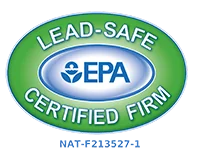 Since insulation’s beginning, it was installed with the purpose of creating a thermal barrier around a building — and keeping those inside safe, comfortable, and protected from the elements. Little did we know building science would come on the scene and change our industry in a big way. And it’s here to stay.
Since insulation’s beginning, it was installed with the purpose of creating a thermal barrier around a building — and keeping those inside safe, comfortable, and protected from the elements. Little did we know building science would come on the scene and change our industry in a big way. And it’s here to stay.
There is a lot to know about building science — we’ve taken the time to break it down for you.
Much of building science focuses on air flow. Improper air flow can have severe effects on the health and safety of the people in the building. It can also cause mold growth, spread pollutants and more. Controlling air flow increases the efficiency of a building, reduces stress on mechanicals and controls indoor air quality.
There are a few key conditions that affect air flow (courtesy ENERGYSTAR.gov):
- Controlled versus uncontrolled airflow
- Controlled air flow is generated by a mechanical device and is designed to help ventilate a building and/or distribute conditioned air throughout a building. Ventilation systems, fans and heating and cooling systems are typical sources of controlled air flow.
- Uncontrolled air flow is unintended air flow into, out of, or within a building. This can be caused either by wind, warm air rising in the building, uncontrolled fans and leaks in an air handling system.
- Air pressure from wind, heat, fans and duct systems
- Pressure differences across holes, boundaries, and barriers within a building are caused by one of four forces:
- Wind blowing against a building can cause large pressure differences between one side of the building and the other.
- Heat and the buoyancy of hot air affects air pressure. Heat naturally attempts to rise to the top of a building (called stack pressure or stack effect. The amount of pressure depends on the temperature difference between the inside and outside of the building, as well as the height of the building.
- Fans (particularly exhaust fans and HVAC air handlers) can contribute to pressure changes in several different ways. Leakage in the building envelope or the ducting, or an imbalance in the supply and return ducts can cause these fans to have a drastic effect.
- Duct systems that leak to the outside of the building on both the supply and return sides of the system can cause infiltration rates to increase by as much as 300%.
- Pressure differences across holes, boundaries, and barriers within a building are caused by one of four forces:
- Holes and pathways
- Uncontrolled air flow (infiltration) into a building is a result of holes in the building’s shell. By reducing the number of holes in the building, and you reduce the amount of uncontrolled air flow. Buildings have two kinds of holes: designed holes and undesigned holes.
- Undesigned holes in the home are found in the attic, walls, and floors. Any of these holes that connect to the outdoors should be adequately blocked, caulked, gasketed, or otherwise adequately sealed
- Designed holes include any hole or system that is designed to have air passing through it in a specific direction. Examples of such holes include flues and combustion vents, chimneys, make-up fans, exhaust fans, dryer vents, cooktop fans, ventilation systems, central vacuums, windows and doors, and fresh air inlets/outlets.
- Uncontrolled air flow (infiltration) into a building is a result of holes in the building’s shell. By reducing the number of holes in the building, and you reduce the amount of uncontrolled air flow. Buildings have two kinds of holes: designed holes and undesigned holes.
All of these things are incredibly important conditions to consider when improving the energy efficiency of a home or business. The way air moves through a building matters — and it ultimately determines how comfortable (and healthy) you are where you live as well as how much it will cost you for that comfort over the lifetime of your home.
Have questions on the air flow in your home or building? Contact us today!



